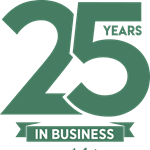OK, hold up. That would require a Self Managed Superannuation Fund (SMSF). We first must know a few basic facts about this self managed retirement savings investment.
- You should aim to have at least $150k in the super fund
- You can have up to 4 members in the SMSF
- You or a family member (related party) can’t live in the property
- You can’t transfer a residential property you already own into your super fund
- Your super fund can borrow money to purchase a property
- There will be responsibilities that you legally have as a director of your own super fund
- A self managed super fund isn’t the answer to all of your problems
It’s a matter of trust(ee)
Let’s first have a look at your “normal” super account. If you have a super fund with Australian Super, IOOF, AMP, MLC, ING, CBUS, HESTA, REST or any other acronym, you legally do not control your retirement savings. These companies are effectively the “trustee” of your money and control the funds for the benefits of their members. They are retail funds or industry funds. I will just refer to anything that is not a SMSF as a retail fund from here on. Retail funds do not have the facility to allow members to go and buy real property with their retirement savings. It’s way beyond their scope and it would be an administrative nightmare. For example, most people have “property” as an asset class in their super already and may not even know it.
You may already own property in your fund, either by one of two ways:
1. Your super fund may contribute to building a property, like CBUS does (essentially a construction union super fund). When the property sells there is a profit or if they own it they would receive rent as income for the fund; or
2. Via the stock exchange or “listed property trusts”. Super funds may buy shares in companies that buy shares in, say, Westfield or other larger companies who may own residential towers for example.
Chances are you already have property exposure. Oh, if you want to learn more about investing basics, you might like my article on Active vs Passive investing.
“Chances are you already have property exposure.
There are some limitations of course with using a retail fund. For example, if there was a messy situation where a member died and they did not nominate who the money would go to, it is at the trustee’s discretion as superannuation falls outside of your Will. So you could put in your Will that all your money goes to your new partner, but your ex may end up getting the money. Scandal right.
It is important to remember that either a retail fund or a SMSF operate under the same super laws in Australia.
Minimum balance to start
Technically you can start a SMSF with a very small amount, say $20,000. However, it may cost say, $3,500 to establish the fund. That means it has cost you 17.5% of your fund balance just in set up fees. That’s nuts. Unless there is a strategic plan in place which means you need to set this up (an example of this is if someone owned a commercial property in their own name and they wanted to move it into the fund).
Going with the $20,000 balance, if it cost you $2,200 in yearly accounting fees for the fund, that’s still 11% per year in fees. Crazy.
My retail super fund has fees of 0.82% per year and most retail funds will be under 1% in fees.
Let’s look at $150,000 account balance. If the yearly fee was $2,200 the % fee would only be 1.47%. Now that’s getting a little more bearable. You can see how the higher the balance the lower the % fee becomes.
Super and investments are all about that %.
Who can be a member a SMSF?
A SMSF can only have 4 members. Each member must be a trustee of the fund (unless they are under 18). They must control the assets with the purpose of providing a retirement benefit for their members (them) or their dependants. A family of 4 could have their own SMSF or two business partners and their spouses may also be in the one fund. You can not be a member of a fund if you're employed by another member.
This means if a couple had a super balance of $80,000 each - together they would have a starting balance of $160,000.
The SMSF trustee
Each member can be a trustee and that’s what’s known as “individual trustees”. It’s much cleaner and considered best practice to have an empty company presiding over the SMSF with each member as a director, known as a “corporate trustee”. The technical details of the reasons why you may or may not have a corporate trustee should be discussed with your Financial Adviser, Accountant and Estate Planning Lawyer.
You can start to see from a control point of view the benefits of a SMSF. For example the trustee who controls the money in the fund would be you - not a board of people sitting on the other side of the country. Note, in both situations everyone is bound by the law of the land.
You also take on significant legal responsibilities when running your own SMSF. If you breach the law, on purpose or accidentally you can be fined as a trustee. Each trustee of the fund would receive a fine. The current maximum fine is around $12,000 per trustee. One reason you would consider a corporate trustee, as there is then only one trustee of the fund!
You need to remember, that you are effectively starting a company. There are annual financials and tax returns to be completed, tax to be paid manually, an independent audit of the fund and book-keeping of the bank accounts. Further to this, any changes made to the fund may require meeting minutes. You would generally pay an accountant who specialises in SMSF’s to assist with running the fund.
What can a SMSF purchase?
Almost any financial investment.
- Cash management accounts (a bank account essentially).
- Term deposits.
- Managed funds (Australian and international).
- Listed Australian shares.
- Listed unit trusts (property, investment) and investment companies.
- Overseas listed shares.
- Residential, commercial & industrial property.
- Property purchased with borrowed funds (this is called “limited recourse borrowing”).
- Property partnerships with non-related parties.
- Shares in private companies with non-related parties.
- And more
Every SMSF should have an investment strategy, this document states what the strategy of the fund is. For example, the investment strategy may say that only up to 20% of the account balance may be invested in international shares.
Buying a property with your SMSF
If you wanted to buy a property with your SMSF, you could just buy it outright if you had the money in the fund. Otherwise the SMSF would have to get a loan and that’s what’s known as limited recourse borrowing.
It’s not like buying a home or investment property in your own name. Another reason why you may need a larger account balance for your SMSF is because you will need a deposit of 20% to get a loan in the name of your SMSF. Further to this, a lender will want minimum liquidity in the loan amount of 10% in cash.
Let’s look at the numbers.
$600,000 property price with a $480,000 loan (80%)
$120,000 deposit is required (20%)
$48,000 liquidity is required in the bank account

So just on that basic number, you would want to have $168,000 in the SMSF to purchase a $600,000 property.
I have not even included any stamp duty or associated closing costs.
As part of this lending requirement, the lender will take into account any rental return and any superannuation guarantee payment which is made to your account (that’s your 9.5% ‘super’).
You need to factor in any property expenses, time without tenants, agency fees, insurance costs etc.
If you have the cash, you can certainly buy a property outright. If you need a loan with your SMSF, it’s called a Limited Recourse Borrowing Arrangement (LRBA). There are some complexities and things you need to know about LRBA’s, such as they can’t be interest only or can’t be tweaked once in place. A professional will detail the current legislation surrounding LRBA’s as they have been known the change over time.
A basic rule about SMSF’s
I generally tell my clients that you would only set up a SMSF if you fit into at least one of the below categories:
- You have a burning desire to buy a property with your superannuation assets (you would still generally need around that $200k anyway)
- You have a complex estate planning issue and a little bit more control is required (I.e. a large blended family with ex-partners and step kids everywhere)
- You have significant wealth in your superannuation (and therefore control may be a primary driver)
If you have a super balance of say $100,000 with one of the main super funds, there is not really an advantage of setting up a SMSF. Most of the investments apart from property you would have in a SMSF (like shares or managed funds), you can get in a retail fund without the added expense and hassle of being a director. Again, if you wanted “property” with your super there are options to invest just in property, just not a direct investment property, with your current super fund.
A common trap
This is an issue I see a lot. People will go and set up their own SMSF and rollover the funds from their existing funds and in one fell swoop - their life and income insurances are canceled. You may not even know you have insurance in your current fund. In any case, you would need to seek advice to set up new insurances which are owned by the new SMSF before you cancel your existing accounts. You will need a financial adviser for this, as most of the life and income insurances you buy direct, like over the phone or internet (other than being rubbish) would not be able to be owned by your SMSF.
Advice
This is one area of your personal finances which I would strongly recommend advice. Well, in fact if you are doing some lending with the use of a LRBA; the bank may wish to see your financial advice in any case, so a Statement of Advice (SoA) would be required. Please speak to a qualified financial adviser or accountant who work in this space.
ARTICLE CREDIT - Glen James @ Sort Your Money Out





